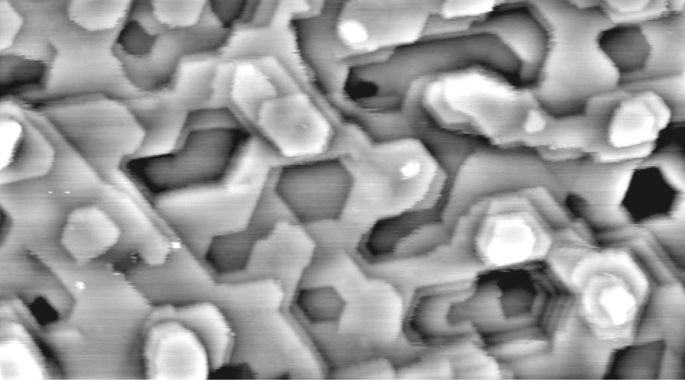Nature Catalysis ( IF 42.8 ) Pub Date : 2019-10-07 , DOI: 10.1038/s41929-019-0360-1 Bernhard Böller , Katharina M. Durner , Joost Wintterlin

|
Direct identification of the active sites of a working catalyst is still a major problem in heterogeneous catalysis. Here we present an operando scanning tunnelling microscopy study, in which insight into the nature of the active sites was obtained for the cobalt-catalysed Fischer–Tropsch synthesis. Experiments were performed on a Co(0001) sample under H2/CO gas mixtures at pressures of up to 950 mbar and a temperature of ~500 K. On the same apparatus, turnover frequencies were measured with a customized gas chromatograph. The density of monoatomic steps of the sample was varied by sputtering. The Fischer–Tropsch activity scaled with step density, from which steps are identified as the active sites of this reaction. The long-standing idea that the activation of the Co catalyst is connected with a roughening of the surface is not confirmed. The known activity function can be explained by pre-existing steps without roughening.
中文翻译:

通过操作扫描隧道显微镜揭示的费-托催化剂的活性位点
在多相催化中,直接鉴定工作催化剂的活性位点仍然是一个主要问题。在这里,我们介绍了一种操作扫描隧道显微镜研究,其中对钴催化的费-托合成反应获得了活性位点的性质的了解。实验是在H 2下对Co(0001)样品进行的/ CO气体混合物,压力高达950 mbar,温度约500K。在同一台设备上,使用定制的气相色谱仪测量周转频率。通过溅射改变样品的单原子步骤的密度。Fischer-Tropsch活性随步长密度而定,由此可将步长确定为该反应的活性位点。Co催化剂的活化与表面的粗糙化有关的长期观念尚未得到证实。已知的活动函数可以通过预先存在的步骤进行解释,而不必进行粗化。











































 京公网安备 11010802027423号
京公网安备 11010802027423号